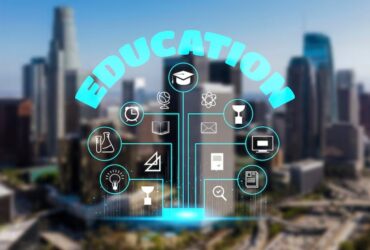Learning goals are specific objectives that guide a student’s educational journey and help them stay focused and motivated. These goals can include achieving certain grades, improving study habits, or developing new skills.
By setting clear and measurable goals, students can navigate the challenges of their academic path effectively. Establishing learning goals is crucial for designing courses and assessing their success. These goals identify the knowledge, skills, and capacities that students are expected to acquire by the end of a course.
By defining learning goals, educators can clarify what students should know or be able to do upon completing the course, aiding in effective teaching and learning strategies.
Learning Goals Unveiled
Learning goals refer to the specific objectives that students are expected to achieve in a particular course or program. They are the desired outcomes of a learning experience, and they guide the design and assessment of the curriculum. In this post, we will explore the key components of learning goals and their impact on the academic journey.
Key Components
Learning goals are typically composed of three main components: the behavior, the condition, and the criteria. The behavior refers to the action or skill that the student is expected to demonstrate, such as “analyze,” “synthesize,” or “evaluate.” The condition specifies the context in which the behavior should be performed, such as “given a set of data” or “in a group discussion.” The criteria define the level of performance that is considered acceptable, such as “with 80% accuracy” or “in a coherent and organized manner.”
The key components of learning goals are essential for creating clear and measurable objectives that provide students with a sense of direction and purpose. They also help instructors to design effective instructional strategies and assessments that align with the desired outcomes.
Impact On Academic Journey
Learning goals have a significant impact on the academic journey of students. By setting clear expectations and objectives, they motivate students to engage in the learning process and take responsibility for their own progress. They also help students to focus their efforts on the most important concepts and skills, which can improve their overall performance and reduce the risk of confusion or overwhelm.
Furthermore, learning goals provide a framework for assessing and reflecting on learning outcomes. By evaluating their own progress against the desired outcomes, students can identify areas of strength and weakness and adjust their study strategies accordingly. This can lead to a more personalized and effective learning experience that maximizes student success.
Learning goals are an essential component of effective teaching and learning. By providing clear and measurable objectives, they guide the design and assessment of the curriculum and motivate students to engage in the learning process. They also provide a framework for assessing and reflecting on learning outcomes, which can lead to a more personalized and effective learning experience. By understanding the key components and impact of learning goals, both instructors and students can work together to achieve their desired outcomes.
Setting The Course
Before embarking on any learning journey, it’s essential to establish clear learning goals. These goals serve as the guiding light, providing direction and purpose to the learning process. Setting the course involves defining specific objectives and creating a roadmap for achieving them.
Establishing Smart Goals
Setting SMART (Specific, Measurable, Achievable, Relevant, Time-Bound) goals is crucial for effective learning. Each goal should be clear and well-defined, ensuring that progress can be easily measured and evaluated. By establishing SMART goals, learners can focus their efforts on meaningful targets, leading to a more purposeful and productive learning experience.
Action Plans And Timelines
Once the learning goals are in place, it’s essential to develop detailed action plans and timelines. These plans outline the specific steps and strategies that will be employed to achieve the learning objectives. Additionally, timelines provide a structured framework, establishing deadlines and milestones to track progress and ensure accountability.
In The Classroom
When it comes to the classroom, learning goals play a crucial role in guiding the educational journey of students. These goals provide a clear direction for both educators and learners, ensuring that the focus remains on the key objectives of the curriculum. Let’s explore the various strategies and milestones that contribute to the establishment and achievement of learning goals within the classroom environment.
Curricular And Co-curricular Strategies
Curricular and co-curricular strategies are essential components in shaping the learning goals of students. Through the integration of curricular activities, such as structured lesson plans and academic assessments, students can acquire the necessary knowledge and skills outlined in the curriculum. Co-curricular activities, on the other hand, encompass extracurricular programs, community service initiatives, and leadership development opportunities, which complement the formal curriculum and contribute to the holistic development of students.
Educational Milestones
Educational milestones serve as significant markers of progress and achievement within the learning journey. These milestones encompass a range of educational accomplishments, such as mastering specific subject matter, attaining proficiency in critical thinking and problem-solving, and demonstrating effective communication skills. By setting and attaining these educational milestones, students can track their progress and work towards the fulfilment of their learning goals.

Credit: midway.libguides.com
Beyond The Books
Learning goals go beyond the traditional academic objectives, encompassing essential skills and values necessary for real-world success. These goals extend into the realms of ethics, critical thinking, leadership, and more, preparing individuals to navigate the complexities of professional and personal life.
Skills For Real-world Success
Academic learning goals are designed to equip students with practical skills that are directly applicable in real-world scenarios. These skills include communication, critical thinking, leadership, teamwork, innovation, technological competence, curiosity, and professionalism.
Balancing Ethics And Engagement
Learning goals also emphasize the development of ethical values and civic engagement, encouraging students to consider the impact of their actions on society. This holistic approach ensures that individuals not only possess the necessary technical skills but also uphold ethical standards and actively engage in community development.
Tools For Measurement
When it comes to learning goals, it’s essential to have effective tools for measurement. These tools play a crucial role in assessing learning outcomes and providing feedback mechanisms that contribute to the overall success of the learning process.
Assessing Learning Outcomes
Assessing learning outcomes is a vital component in determining the effectiveness of learning goals. By utilizing various assessment methods such as quizzes, exams, projects, and presentations, educators can gauge the extent to which students have achieved the desired learning objectives. These assessments provide valuable insights into the strengths and areas needing improvement, allowing for targeted interventions to enhance the learning experience.
Feedback Mechanisms
Feedback mechanisms serve as invaluable tools for measuring learning goals by providing students with constructive input on their progress. This can include written or verbal feedback from instructors, peer evaluations, self-assessments, and rubric-based assessments. These mechanisms not only offer insight into individual performance but also facilitate continuous improvement and a deeper understanding of the learning material.
Future-proofing Education
Future-proofing education is about preparing students for the challenges and opportunities of tomorrow. It involves equipping them with the skills and knowledge they need to thrive in a rapidly changing world. By setting clear learning goals, educators can ensure that students are well-prepared to adapt and succeed in the future.
Incorporating Technology
Integrating technology into education is essential for future-proofing learning. It allows students to develop digital literacy and adapt to the technological advancements shaping the modern workplace. By incorporating technology into the curriculum, educators can empower students to become proficient in using digital tools and platforms, preparing them for the demands of the digital age.
Adapting To Evolving Skill Sets
Adapting to evolving skill sets is crucial for future-proofing education. Learning goals should focus on developing adaptable and transferable skills such as critical thinking, creativity, collaboration, and problem-solving. By emphasizing these skills, educators can ensure that students are equipped to navigate the dynamic and unpredictable nature of future careers and industries.
Frequently Asked Questions
How Do You Identify Learning Goals?
You can identify learning goals by defining desired outcomes, making them SMART, writing them down, planning clear steps, and setting a timeline to guide steady progress.
What Are The 8 Learning Goals?
The 8 learning goals are Ethics & Civic Engagement, Critical Thinking, Communication, Leadership & Teamwork, Innovation and Action, Curiosity & Skill, Technological Competence, and Professionalism.
What Are The Learning Goals Of A Student?
Student learning goals are objectives to guide their educational journey, ranging from specific grades to skill development, enhancing study habits, and staying motivated.
What Are Learning Goals In Education?
Learning goals are specific objectives set to guide educational journeys and improve skills and study habits.
How Often Should Learning Goals Be Updated?
Learning goals should be updated regularly, especially when progress is made, priorities change, or new skills become necessary for academic or professional growth.
Conclusion
Learning goals play a key role in shaping any educational path by giving students direction and helping them focus on meaningful milestones. These goals support skill growth, stronger study habits, and consistent motivation, making it easier to track progress over time. When goals are specific and measurable, they become powerful tools for course planning and evaluating success. Understanding What Are Learning Goals allows learners and educators to create a structured approach that leads to steady improvement and long-term achievement. With clear goals in place, every step in the learning process becomes more purposeful and effective.












































Leave a Reply